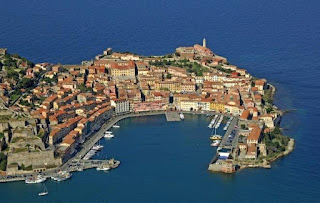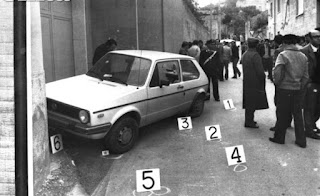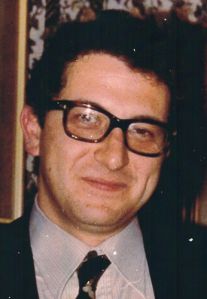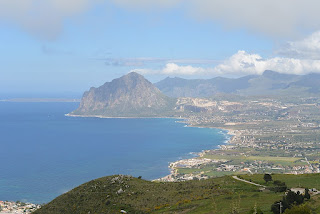Bomb destroys Archiginnasio anatomical theatre
Historic facility hit in 1944 air raid
The historic anatomical theatre of the Palazzo Archiginnasio, the original seat of the University of Bologna, was almost completely destroyed in a bombing raid on the city by Allied forces on this day in 1944. The northern Italian city was a frequent target during the final two years of the conflict because of its importance as a transport hub and communications centre. The wing of the palazzo housing the anatomical theatre, built between 1636 and 1638, took a direct hit on the night of January 29. Although it is unlikely that the university - the oldest in the world - was a specific target, bombing was much less precise 75 years ago and collateral damage was common and often widespread. As well as its importance in the history of medical research, the anatomical theatre was notable as an art treasure, mainly for the 18th century carved wooden statues by Silvestro Gianotti depicting great physicians of history, from the Greek physicians Hippocrates and Galenus onwards, including many who worked at the university, such as Fabrizio Bartoletti, Marcello Malpighi, Mondino de Liuzzi and Gaspare Tagliacozzi. Read more…
_____________________________________
Luigi Nono - avant-garde composer
Venetian used music as a medium for political protest
The Italian avant-garde composer Luigi Nono, famous for using music as a form of political expression, was born in Venice on this day in 1924. Nono, whose compositions often defied the description of music in any traditional sense, was something of a contradiction in that he was brought up in comfortable surroundings and had a conventional music background. His father was a successful engineer, wealthy enough to provide for his family in a large house in Dorsoduro, facing the Giudecca Canal, while his grandfather, a notable painter, inspired in him an interest in the arts. He had music lessons with the composer Gian Francesco Malipiero at the Venice Conservatory, where he developed a fascination for the Renaissance madrigal tradition, before going to the University of Padua to study law. Nono appreciated the natural sounds of Venice, in particular how much they were influenced by the water, and as he began to compose works of his own there might have been an expectation that any contemporary influences would have been against a backcloth of ideas rooted in tradition. Read more…
_____________________________________
Felice Beato – war photographer
Venetian-born adventurer captured some of first images of conflict
Felice Beato, who is thought to be one of the world’s first war photographers, died in Florence on this day in 1909. He was 76 or 77 years old and had passed perhaps his final year in Italy, having spent the majority of his adult life in Asia and the Far East. Although he was from an Italian family it was thought for many years that he had been born on the island of Corfu and died in Burma. However, in 2009 his death certificate was found in an archive in Florence, listing his place of birth as Venice and his place of death as the Tuscan regional capital. Beato photographed the Crimean War in 1855, the aftermath of the Indian Rebellion in 1857 and the final days of the Second Opium War in China in 1860, later travelling with United States forces in Korea in 1871 and with the British in the Sudan in 1884-85. He also spent many years living in Japan and then Burma, where his photography introduced the people and culture of the Far East to many in the West for the first time. In addition, he developed photography techniques that put him ahead of his time, despite the crude nature of equipment compared with today’s technology. Read more…
______________________________________
Fire at La Fenice
Oldest theatre in Venice keeps rising from the ashes
La Fenice, the world famous opera house in Venice, was destroyed by fire on this day in 1996. It was the third time a theatre had been burnt down in Venice and it took nearly eight years to rebuild. The theatre had been named La Fenice - the Phoenix - when it was originally built in the 1790s, to reflect that it was helping an opera company rise from the ashes after its previous theatre had burnt down. Disaster struck again in 1836 when La Fenice itself was destroyed by fire but it was quickly rebuilt and opened its doors again in 1837. The American writer, Donna Leon, chose La Fenice to be the main location in her first novel featuring Commissario Guido Brunetti, published in 1992. But in January 1996, approximately four years after Leon’s novel, Death At La Fenice, was published, the theatre burnt down again, making it front page news all over the world. Arson was immediately suspected and in 2001 a court found two electricians guilty of setting the building on fire. They were believed to have burnt it down because their company was facing heavy fines because of delays in the repair work they were carrying out. Read more…
___________________________________
Book of the Day: Italy’s Sorrow: A Year of War 1944–45, by James Holland
Today, Italy is a land of beauty and prosperity but in 1944-45 it had become a place of nightmares, a land of violence, war, and destruction. The war in Italy was the most destructive campaign in the west as the Allies and Germans fought a long, bitter and highly attritional conflict up the mountainous leg of Italy during the last twelve months of the Second World War. For front-line troops, casualties rates at Cassino and then along the notorious Gothic Line were as high as they had been along the Western Front in the First World War. For the men who fought there, Italy really was the hardest campaign. And while the Allies and Germans were slogging it out through the mountains, the Italians were fighting their own battles, one where Partisans and Fascists were pitted against each other in a bloody civil war. Italy's Sorrow is the first account of the war in that most beautiful of countries to tell the story from all sides and to include the experiences of soldiers and civilians alike. Offering extensive new research, it weaves together the drama and tragedy of a terrible year of war with new perspectives and material on some of the most debated episodes to have emerged from the Second World War.James Holland was born in Salisbury, Wiltshire, and studied history at Durham University. He has worked for several London publishing houses and has written for a number of national newspapers and magazines. He is the author of Normandy ‘44, The Battle of Britain, Sicily ‘43 and The Savage Storm: The Battle for Italy 1943 among many books about World War Two, as well as several novels.

.jpg)
.jpg)



.jpg)
.png)
.jpg)
.jpg)







%20(1).jpg)

.jpg)
.jpg)

.jpg)

.jpg)
.jpg)




.jpg)

.jpg)







.jpg)